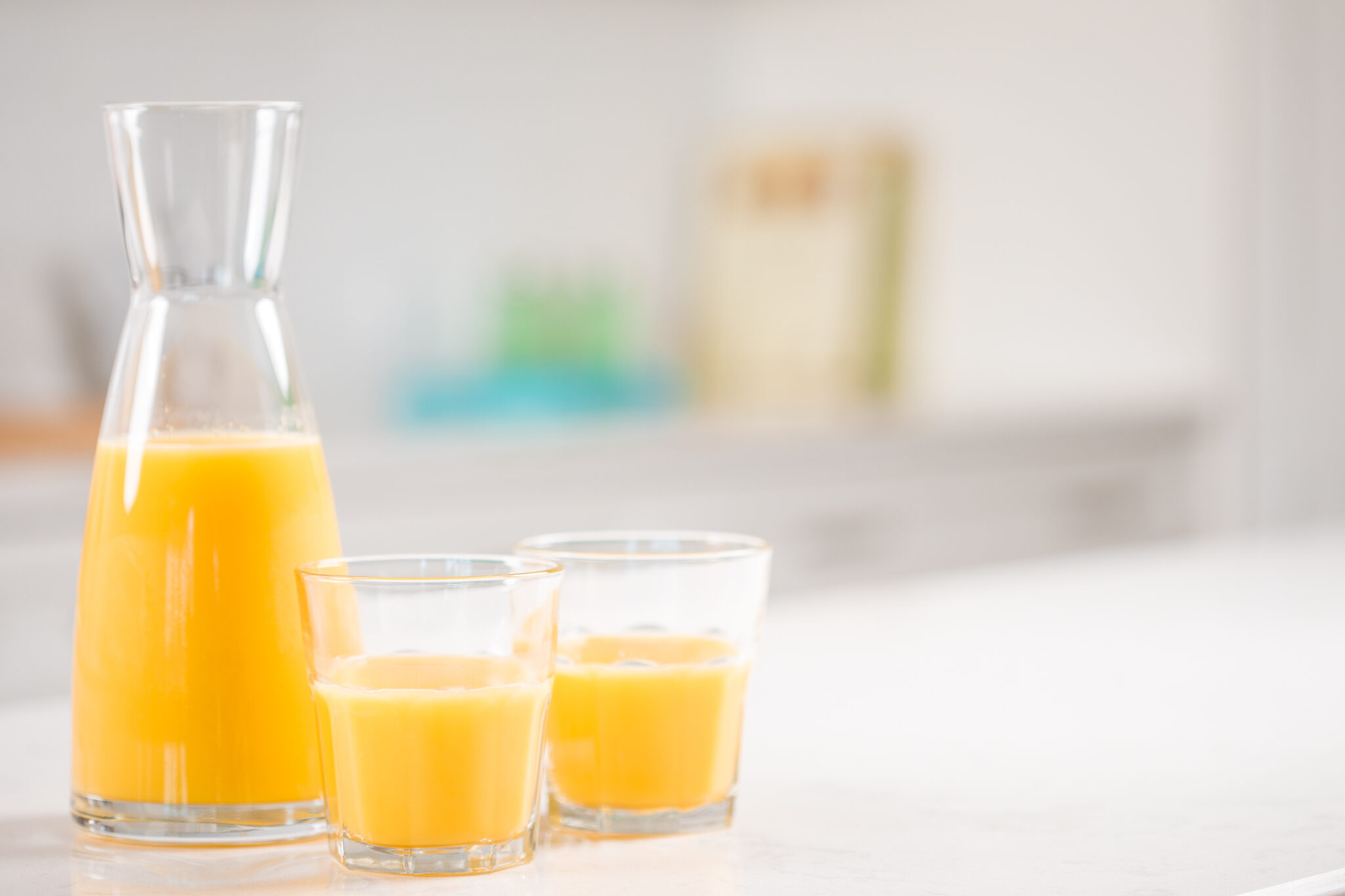The newly released 2020-2025 Dietary Guidelines for Americans (DGA) continue to reinforce that nutrient-dense 100% fruit juices, such as orange juice, count as a fruit serving and include 100% fruit juice as a part of a healthy dietary pattern. The guidelines additionally support the incorporation of beverages such as 100% orange juice, which provides key nutrients and hydration, into the daily diets of children and adults. The new DGA focus heavily on choosing nutrient-dense foods and beverages as part of a healthy dietary pattern. 100% orange juice is more nutrient-dense than other commonly consumed 100% fruit juices1 and is an excellent choice to help children and adults meet daily nutrient needs.
The Guidelines are updated every 5 years to reflect the current body of nutrition science and provide advice on what to eat and drink to promote health and reduce risk of chronic disease. The DGA are the cornerstone of federal nutrition policy and provides evidence-based dietary guidance to consumers and serves as the standard for programs such as the National School Lunch Program and the Special Supplemental Nutrition Program for Women, Infants, and Children (WIC). The latest DGA, released Tuesday, Dec. 29, 2020, recommends that primary beverages either be calorie free – especially water – or contribute beneficial nutrients, such as fat-free and low-fat milk and 100% fruit juice.
The Florida Department of Citrus Scientific Research Department has been closely monitoring the development of the new Guidelines over the past three years. The FDOC submitted comments during the DGA process to highlight and reinforce to the DGA Committee newly published research related to the benefits and nutrient density of 100% orange juice and advocate for recognition in the DGA of bioactive compounds (e.g., hesperidin in orange juice) contributed by 100% fruit juice. FDOC previously reported on the release of the Dietary Guidelines Advisory Committee (DGAC) report, the scientific review document that underpins the DGA policy document. (See the infographic below on how this process works.)
This newest edition of the DGA expands dietary guidance, for the first time including recommended healthy dietary patterns for infants and toddlers as well as pregnant and lactating women. The USDA’s MyPlate website, which offers information and materials to consumers and health professionals, has been updated to reflect the newly released DGA.
Key statements and recommendations in the new DGA specifically regarding the role of 100% fruit juice in the diet include:
- At least half of the recommended amount of fruit should come from whole fruit, rather than 100% juice. When juices are consumed, they should be 100% juice and always pasteurized or 100% juice diluted with water (without added sugars).
- Beverages that contain no added sugars should be the primary choice for children and adolescents. These include water and unsweetened fat-free or low-fat milk—including low-lactose or lactose free options or fortified soy beverage—and 100% juice within recommended amounts.
- Drinks labeled as “fruit drinks” or “fruit-flavored drinks” are not the same as 100% fruit juice and contain added sugars. These beverages displace nutrient-dense beverages and foods in the diet of young children.
- Beverages with added sugars, including “fruit drinks,” can be replaced with nutrient-dense options such as 100% juice to help meet fruit group recommendations.
- In addition to water, older adults should choose unsweetened beverages such as 100% fruit or vegetable juice and low-fat or fat-free milk or fortified soy beverage to support fluid intake to prevent dehydration while helping to achieve food group recommendations.
- Although 100% fruit juice can be part of a healthy dietary pattern, it is lower in dietary fiber than whole fruit.
- 100% fruit or vegetable juices should not be given to infants. In the second year of life, most fruit intake should come from eating whole fruit. If 100% fruit juice is provided, up to 4 ounces per day can fit in a healthy dietary pattern. Juices that contain added sugars should be avoided.
The theme for this edition of the DGA is “Make Every Bite Count” and includes four overarching guidelines:
- Follow a healthy dietary pattern at every life stage.
- Customize and enjoy nutrient-dense food and beverage choices to reflect personal preferences, cultural traditions, and budgetary considerations.
- Focus on meeting food group needs with nutrient-dense foods and beverages from five food groups – vegetables, fruits, grains, dairy and fortified soy alternatives, and proteins – and stay within calorie limits.
- Limit foods and beverages higher in added sugars, saturated fat, and sodium, and limit alcoholic beverages.
Based on sound science and input from the public and government agencies, the new 2020-2025 DGA continue to recognize 100% fruit juices, such as orange juice, as nutrient-dense beverages that can be part of a healthy diet.
U.S. Department of Agriculture and U.S. Department of Health and Human Services. Dietary Guidelines for Americans, 2020-2025. 9th Edition. December 2020. Available at DietaryGuidelines.gov.

